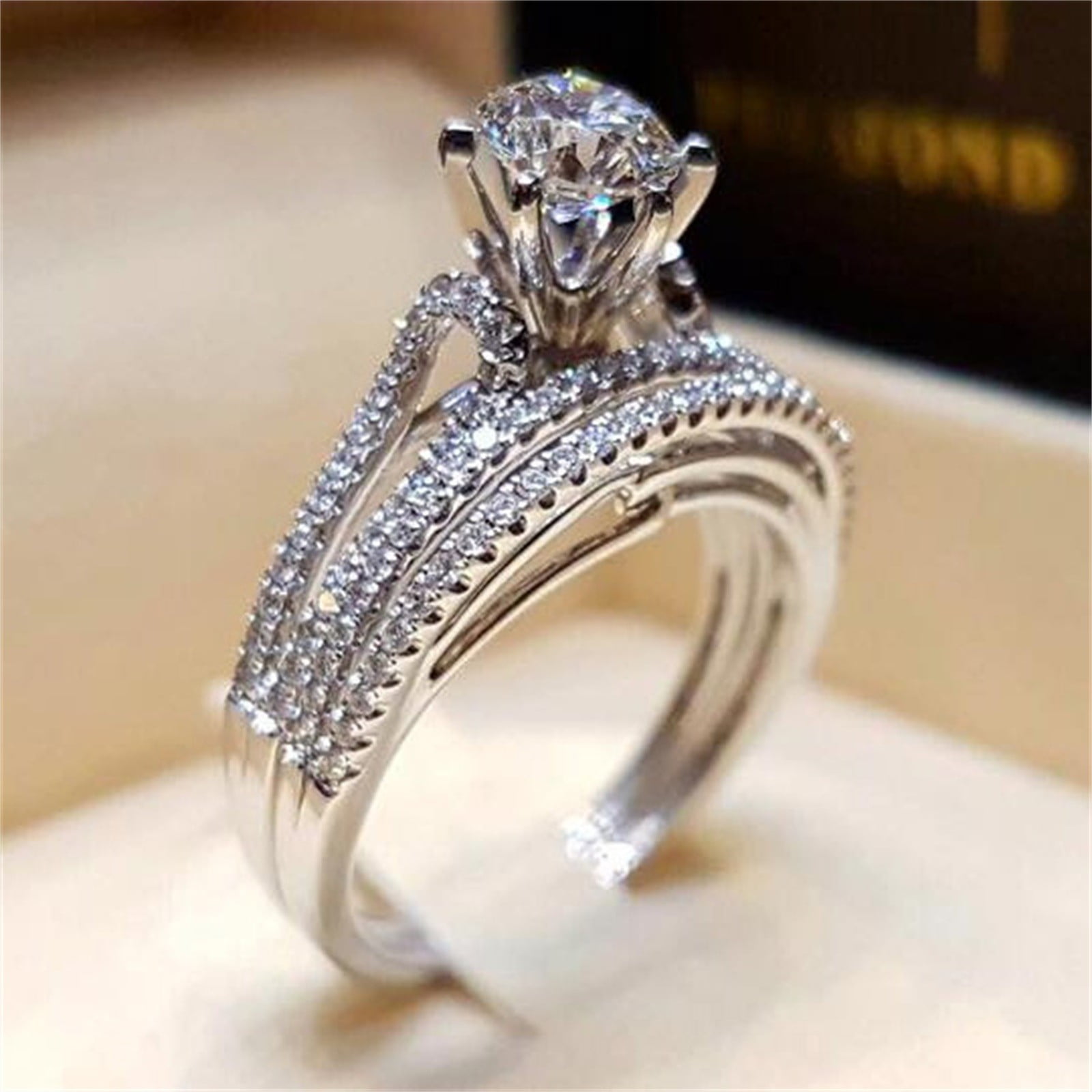Diamond ring – the symbol of romance
Diamond ring are beloved for their timeless beauty and symbolize love, commitment, and celebration. When purchasing a diamond ring, it is crucial to understand the characteristics that determine its value and quality. Factors such as the cut, color, clarity, and carat weight play significant roles in differentiating diamond rings. In this comprehensive guide, we will explore these characteristic elements, share expert tips on how to identify and evaluate diamonds, and help you make informed choices when selecting a diamond ring.
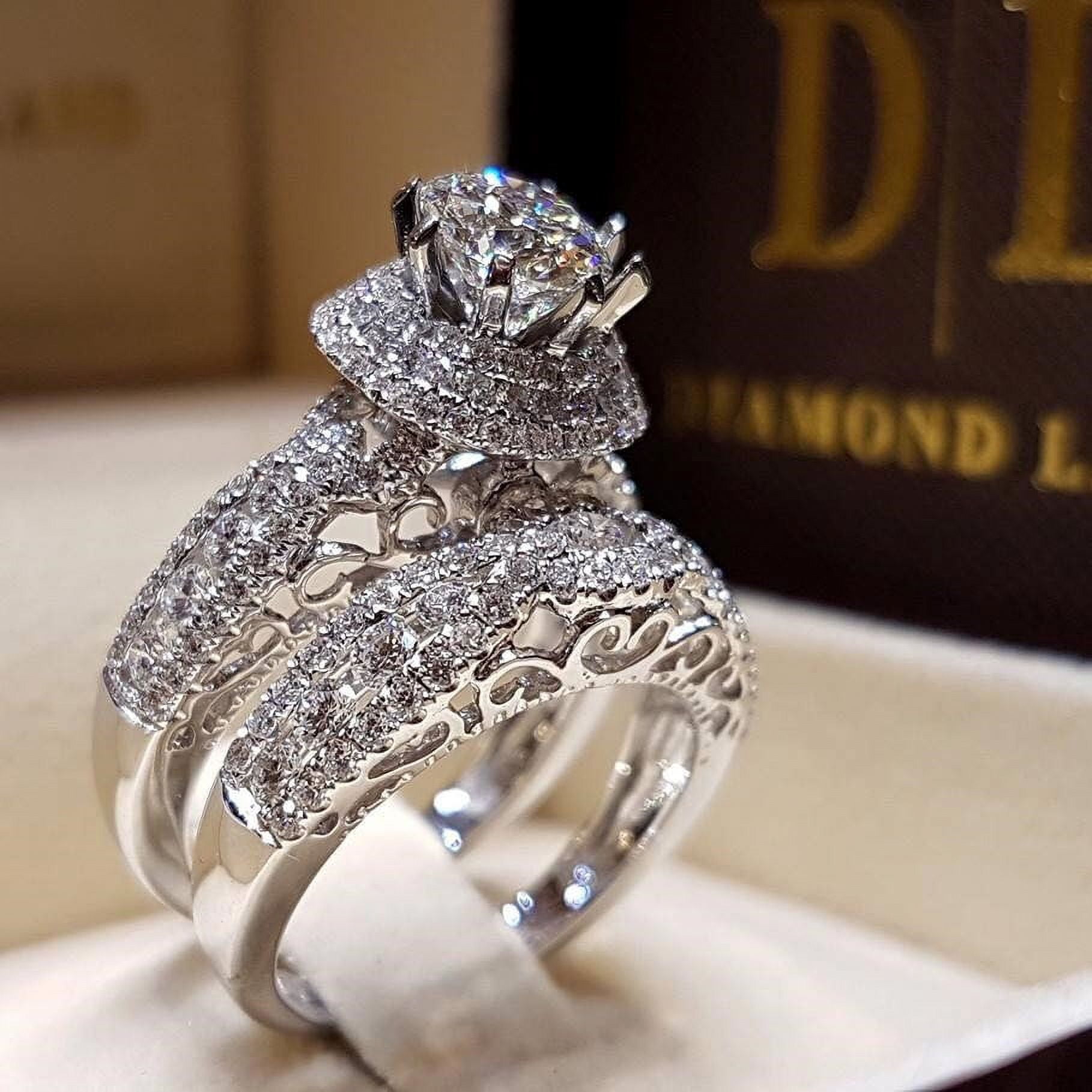
Cut:
- Importance of Cut: The cut refers to how well a diamond’s facets interact with light. It has the most significant impact on a diamond’s sparkle and overall beauty.
- Evaluation: Evaluate a diamond’s cut by considering its proportions, symmetry, and polish. Grades such as Ideal, Excellent, Very Good, Good, Fair, or Poor are used to assess the quality of the cut.
Color:
- Color Grading: Diamonds are graded on a color scale ranging from D (colorless) to Z (light yellow or brown). Colorless diamonds are the most valuable, while those with visible color are more affordable.
- Identifying Color: Comparing diamonds under controll lighting conditions and against a set of master stones is the most accurate method to identify and grade the color of a diamond.
Clarity:
- Clarity Grading: Clarity refers to the presence of internal characteristics (inclusions) and external characteristics (blemishes) in a diamond. The Gemological Institute of America (GIA) grades clarity on a scale ranging from Flawless (no internal or external flaws) to Includ (visible flaws).
- Identifying Clarity: Clarity is assess by examining a diamond under 10x magnification. Inclusions can range from difficult-to-see to obvious and have varying impacts on a diamond’s appearance and value.
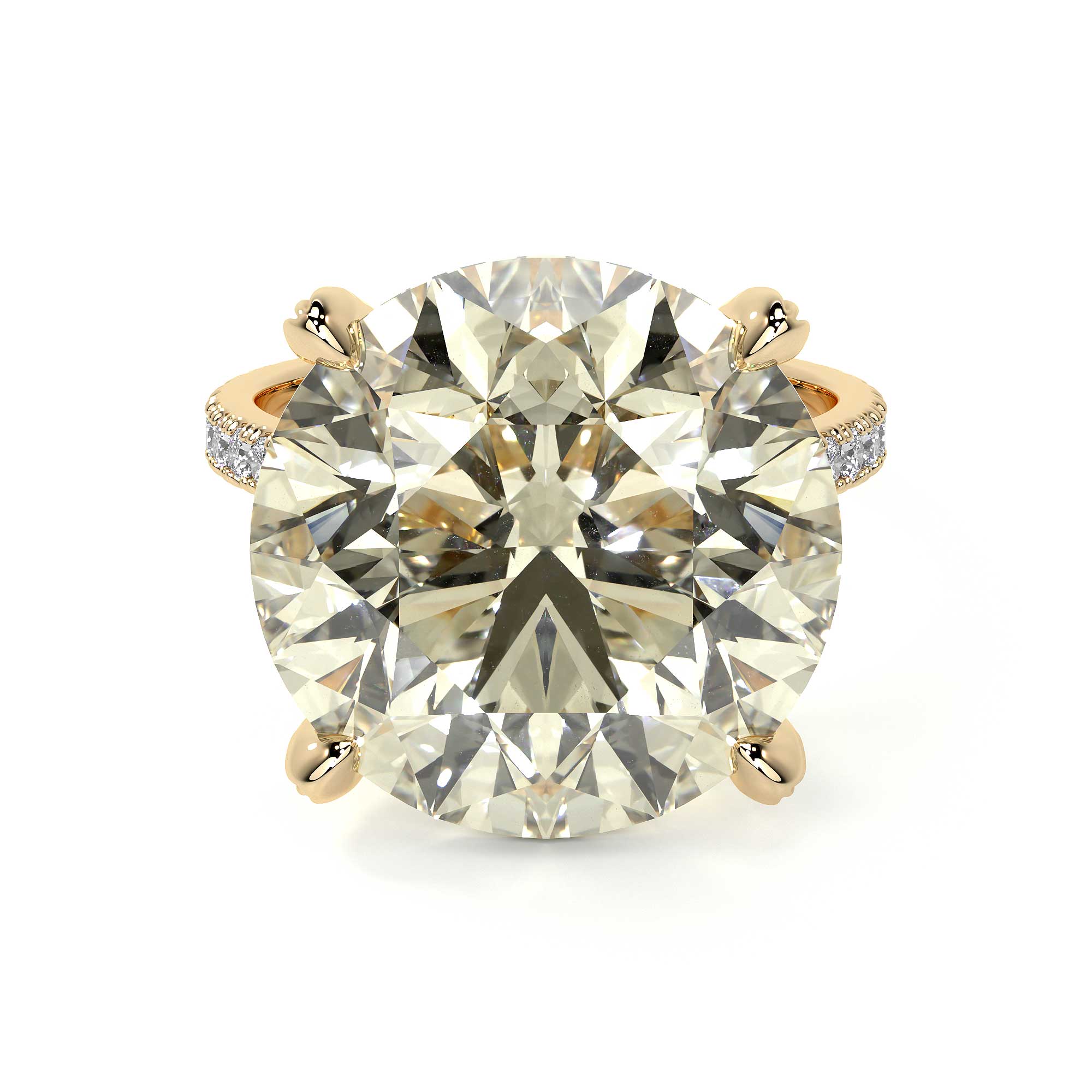
Carat Weight:
- Carat Weight Grading: Carat is the unit of measurement for a diamond’s weight. One carat is equal to 200 milligrams. Carat weight does not directly correlate with a diamond’s size or quality.
- Choosing Carat Weight: Determine the carat weight based on personal preference, budget, and the desire for a larger or more substantial diamond ring. It is essential to strike a balance between carat weight and other quality factors.
Certification and Documentation:
- Importance of Certification: Ensure the diamond ring you purchase comes with a certification from a reputable gemological laboratory, such as the GIA or AGS. Certifications provide an unbiased evaluation of a diamond’s quality.
- Certification Details: The diamond’s cut, color, clarity, carat weight, measurements, and additional information are included in the certification. This documentation allows for accurate comparisons and verification of a diamond’s attributes.
Additional Considerations:
- Diamond Shape: Beyond the 4Cs, consider the shape of the diamond. Popular options include round brilliant, princess, pear, oval, and emerald cuts, among many others. Each shape has its unique characteristics and visual appeal.
- Diamond Setting: The setting of a diamond ring affects its appearance and security. Consider different setting styles such as prong, bezel, and pavé, among others, to enhance the overall design and durability.
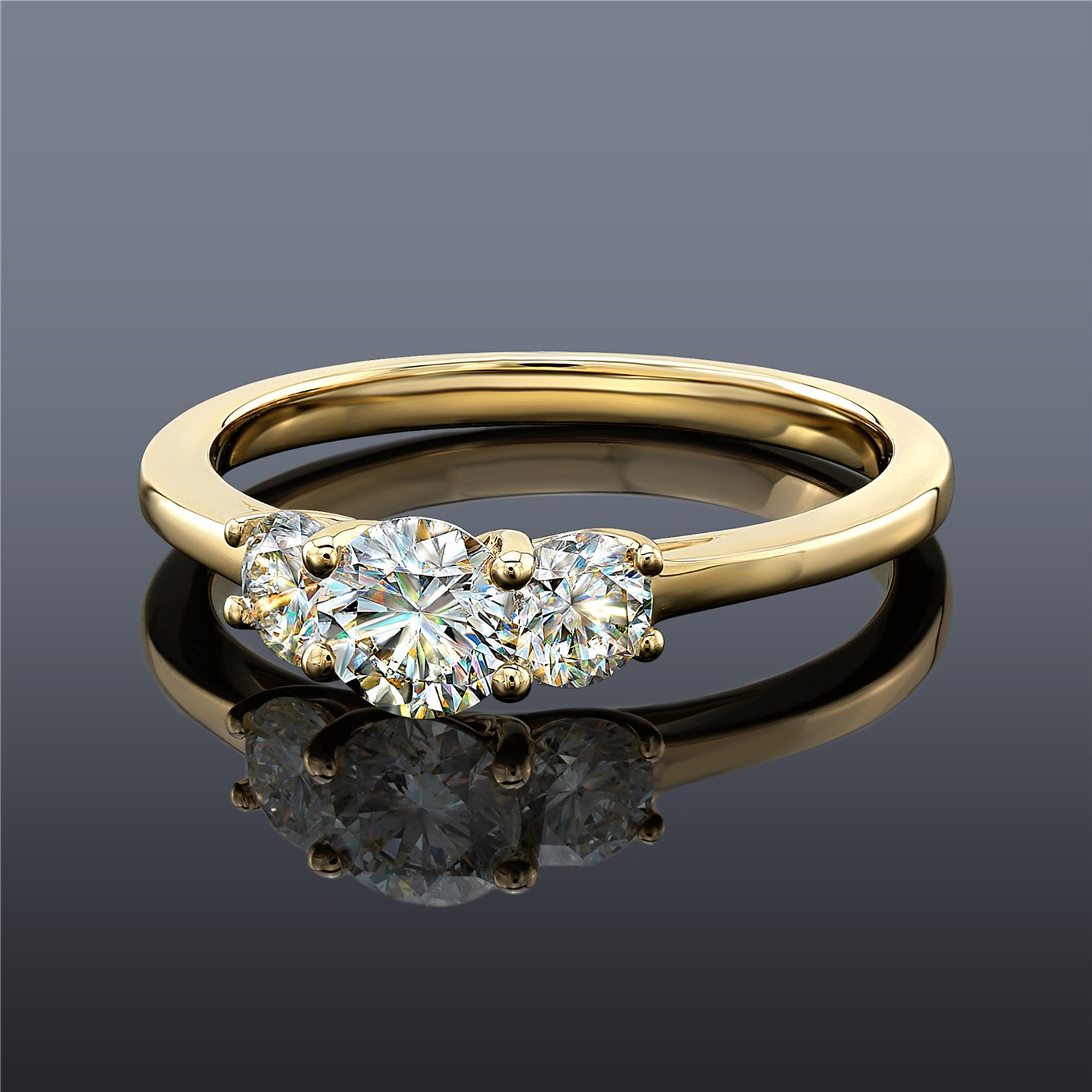
What styles of diamond rings are there?
Diamond rings are treasured pieces of jewelry that symbolize love, commitment, and elegance. With a plethora of styles available, finding the perfect diamond ring can be an exciting and fulfilling process. Each style reflects unique characteristics, aesthetics, and design elements that cater to individual preferences and occasions.
Solitaire Diamond Rings:
- Classic Solitaire: The epitome of simplicity and elegance, classic solitaire rings feature a single diamond set on a plain band. This timeless design showcases the brilliance and beauty of the center stone.
- Cathedral Setting: Cathedral settings refer to solitaire rings with arches or elevated prongs that elevate the diamond for maximum visibility and light exposure. This style adds a regal and sophisticated touch to the classic solitaire design.
- Basket Setting: In a basket setting, the diamond is held with secure prongs and appears as if it is gracefully suspended. This style enhances the brilliance and allows light to enter the diamond from all angles.
Halo Diamond Rings:
- Single Halo: Halo diamond rings feature a center diamond surrounded by a circle of smaller diamonds, creating a mesmerizing halo effect. This style adds extra sparkle and enhances the overall brilliance of the center stone.
- Double Halo: Double halo rings feature two concentric circles of diamonds encircling the center stone. This style amplifies the sparkle and creates a stunning and extravagant look.
- Floral Halo: Floral halo rings have a halo design that mimics the shape and petals of a flower, providing a unique and delicate touch. This romantic and whimsical style complements vintage or nature-inspired designs.
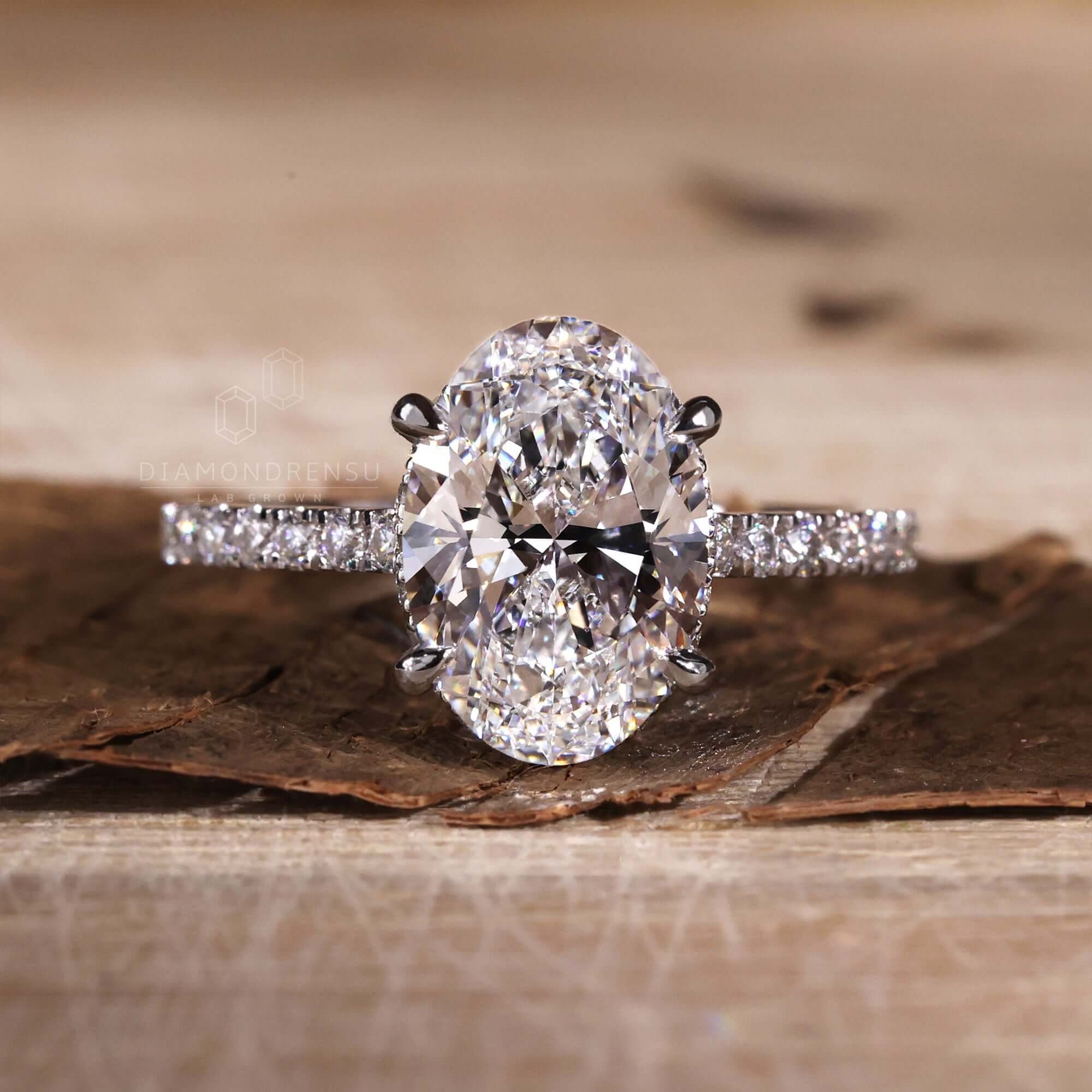
Vintage Diamond Rings:
- Art Deco: Inspired by the Roaring Twenties, Art Deco diamond rings exhibit geometric patterns, intricate filigree work, and a blend of different metals. These vintage designs exude elegance and sophistication.
- Victorian: Victorian-inspired diamond rings showcase delicate details, romantic motifs, and a lavish use of gemstones. The styles range from ornate and intricate to more minimalist designs, allowing for personalization.
- Edwardian: Edwardian diamond rings feature intricate lace-like filigree, milgrain detailing, and a soft, romantic aesthetic. These rings often incorporate nature-inspired motifs, such as flowers and leaves.
Three-Stone Diamond Rings:
- Classic Three-Stone: With three diamonds representing the past, present, and future, classic three-stone rings symbolize enduring love and commitment. The center diamond is flanked by two smaller stones, creating a striking and balanced design.
- Trellis Setting: Trellis-set three-stone rings feature diamonds held by delicate metalwork that resembles a trellis. This design allows maximum light exposure and emphasizes the beauty of each stone.
- Side Stone Accents: Three-stone rings with side stone accents showcase additional diamonds or gemstones on the band, enhancing the overall sparkle and visual impact. This style offers versatility and allows for creative combinations.
Pave Diamond Rings:
- Classic Pave: Classic pave diamond rings feature a band adorned with tiny diamonds set close together, creating a continuous surface of sparkle. This design accentuates the center stone and adds a touch of luxury.
- Micro Pave: Micro pave rings take pave to another level, with even smaller diamonds set intricately and densely, covering the band entirely. This style creates a dazzling, high-shimmer effect.
- Eternity Band: Eternity band rings feature a continuous line of diamonds encircling the entire band, symbolizing endless love and commitment. This design adds a captivating and luxurious touch to any finger.
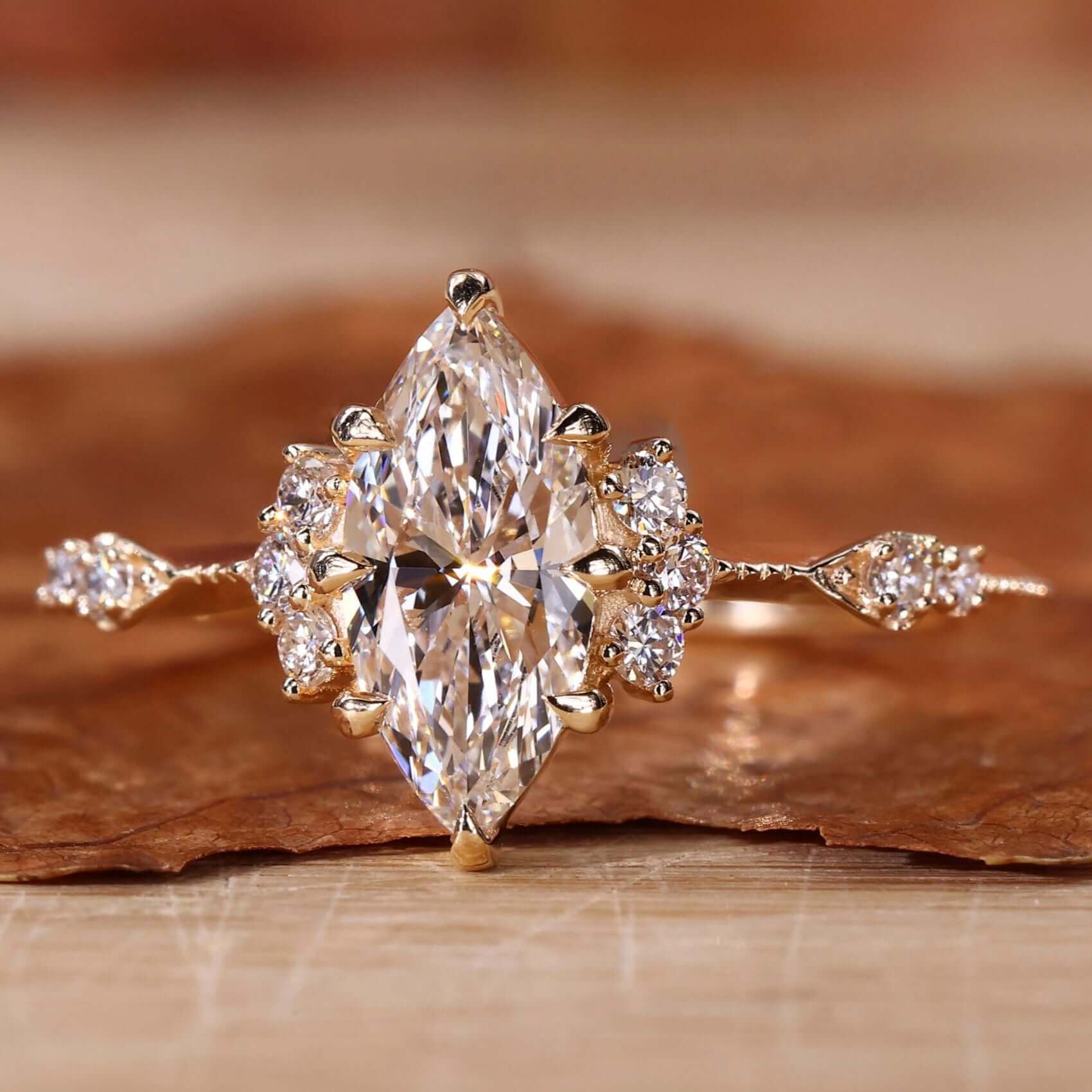
Conclusion:
Understanding the characteristics that distinguish diamond rings empowers you to make an informed decision when purchasing these precious pieces. The cut, color, clarity, and carat weight are key factors to consider, as they directly impact a diamond’s beauty, value, and overall quality. By evaluating these attributes and seeking certification from reputable laboratories, you can confidently select a diamond ring that aligns with your preferences and budget. Remember to also consider the diamond’s shape and the setting style to further enhance the appeal and longevity of your chosen diamond ring.
